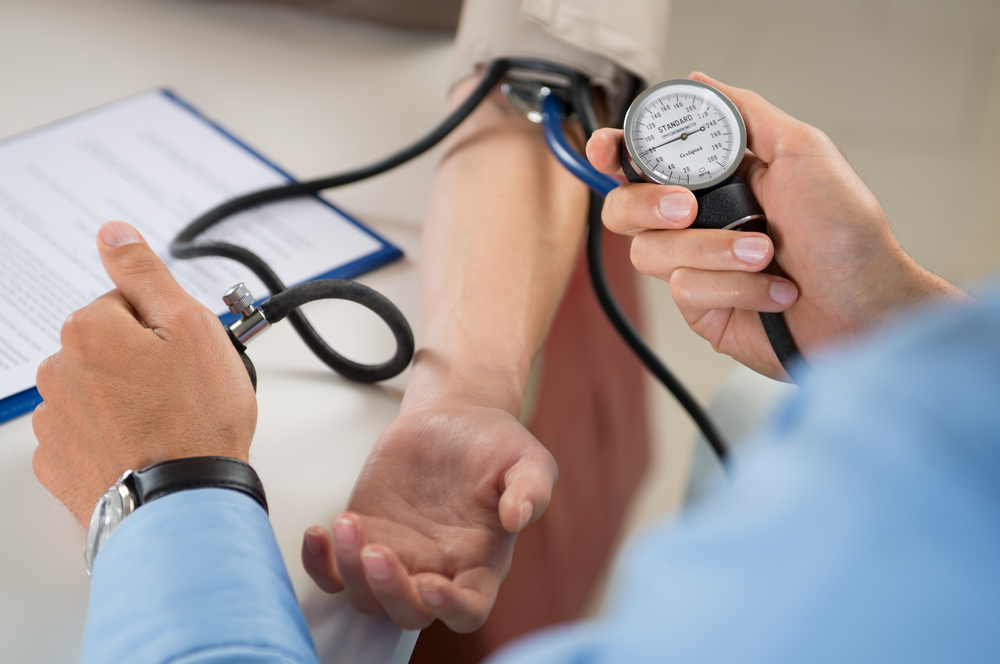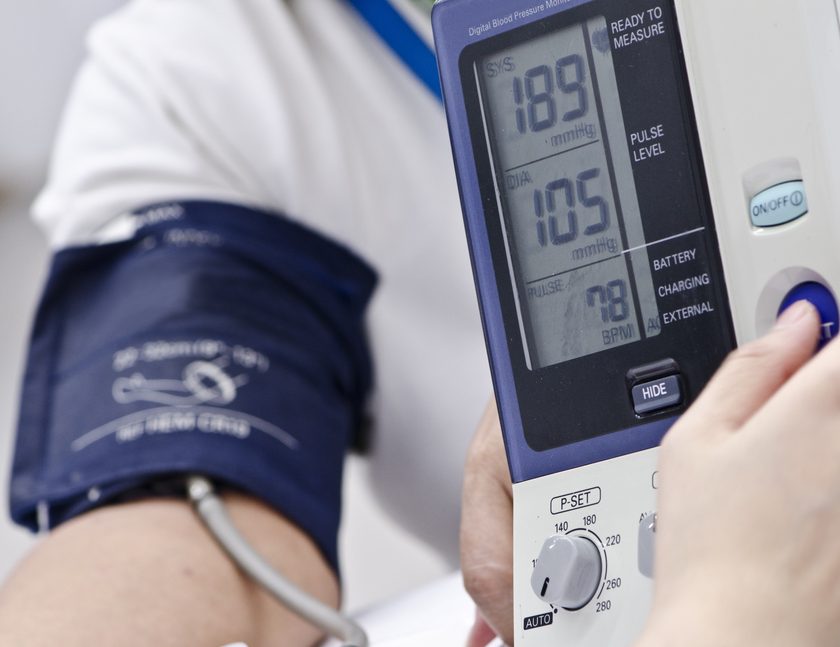
Blood Pressure Readings at the Doctor’s Appointment: What do they really mean?

If you’ve ever been to a doctor’s appointment, it sometimes gets confusing to figure out all that’s taking place. One of the most confusing moments is when the doc measures your blood pressure. All you see is the doc strapping a pressure cuff on your arm.
Then he or she takes a couple of squeezes before jotting down the numbers on their notebook. Which begs the question; what do those numbers actually mean? It’s your lucky day because you’ll be finding out what those numbers actually mean, and how they mirror the current lifestyle that you’re living. So let’s dig in!

Rido/Shutterstock
One of the norms of just about every doctor’s appointment is to have your blood pressure checked. However, most people have no idea what those readings indicate and have to rely heavily on the doctor’s approval that their blood pressure is fine.
Hold on, what is blood pressure first?
In Lehman terms, blood pressure refers to the strength and speed with which blood is being pumped throughout the body. At the center of all of this is the heart. As it pumps oxygen in the blood to various organs of the body, it does so at a specific pressure, which can be determined by the way blood will push up against the arteries and blood vessels.
In fact, this is how your doctor is able to determine your heartbeat by simply holding one of their fingers up against your arteries.

Shine Nucha/Shutterstock
Knowing your blood pressure is vital as it helps you take the right steps to ensure that you live a healthy lifestyle. If it is a little over the top, you can take subsequent measures in your diet and ensure that you are eating the right food
That being said, having a strong heartbeat doesn’t necessarily translate to being a ‘healthy’ individual. As a matter of fact, Dr, Susan Besser of the Mercy Personal Physicians located in Baltimore recommends that blood pressure should ideally have a gentle flow.
What the blood pressure numbers translate to
You’ve probably heard your doctor at one point in time reading two numbers using the phrase, ‘this over that’ etc. Have you ever known what those numbers are?
In fact, the number on top refers to your systolic blood pressure; that is, the pressure of blood being pumped from the aorta to your body organs.
On the other hand, the number at the bottom is referred to as the blood recorded after every push; that is, the point at which the heart, as well as the blood vessels, are in a relaxed state as blood enters the heart. In short, this is called the return flow.
According to the American Heart Association, the recommended blood pressure reading for a healthy human being is 120/80 or lower. In fact, the Association recently lowered the number in the hopes that people with slightly higher readings would immediately seek medical attention in order to get their hypertension treated early.
So if you happen to have a reading that is around 120-129 on the systolic end, then it’s safe to say that you have high blood pressure. If it surpasses the 130 mark, then you have hypertension.
So why is high blood pressure so dangerous?
Over time, high blood pressure can cause significant damage to the veins and arteries, resulting in a stroke. Additionally, they can result in other heart-related issues that can arise in the process.
Hence, if you have an abnormally high reading such as 160/110, then you might need to receive medication right away.
That being said, it is highly recommended that you regularly get your blood pressure checked to ensure that it remains within an acceptable range for optimum health.
More in Health & Well-being
-
`
Here’s Everything You Need to Know About Open Relationships
An open relationship is a consensual arrangement where partners agree to engage in romantic or sexual relationships with other people. Unlike...
June 6, 2024 -
`
Explore the Multifaceted Goals of Meditation
What is the goal of meditation? If you have ever found yourself asking this question, you are not alone. Meditation has...
May 31, 2024 -
`
When is National I Love You Day Celebrated? Mark Your Calendar
Life can get hectic, and sometimes amidst the daily grind, we forget to express our love and appreciation for the phenomenal...
May 23, 2024 -
`
When’s the Best Time of Day to Fish?
For any angler, a successful fishing trip hinges on several factors. But one of the most crucial elements is timing. Knowing...
May 14, 2024 -
`
What Mental Illness Does Britney Spears Have? Discovering the Answer
Britney Spears, a name that resonates with millions around the globe, goes far beyond the glitz and glamour of her stardom....
May 7, 2024 -
`
Here Are Some Easy Ways To Say No To Unrealistic Expectations In Your Relationship
If you are in a relationship, you should constantly work on improving it. Some early lovebirds fall in love too quickly...
May 3, 2024 -
`
Therapy? Medication? What Are the Treatments for PTSD
Post-Traumatic Stress Disorder (PTSD) is a common after-effect of traumatic events. It can be a debilitating condition, but the good news...
April 25, 2024 -
`
Courting vs Dating – Which Relationship Path is Right for You?
In today’s fast-paced world, the terms ‘courting’ and ‘dating’ often swirl around in conversations about relationships. While some people may use...
April 23, 2024 -
`
Essential Mexico Travel Tips for a Seamless Adventure
Mexico, a land of vibrant culture, breathtaking landscapes, and mouthwatering cuisine, beckons travelers from across the globe. But before you embark...
April 16, 2024















You must be logged in to post a comment Login